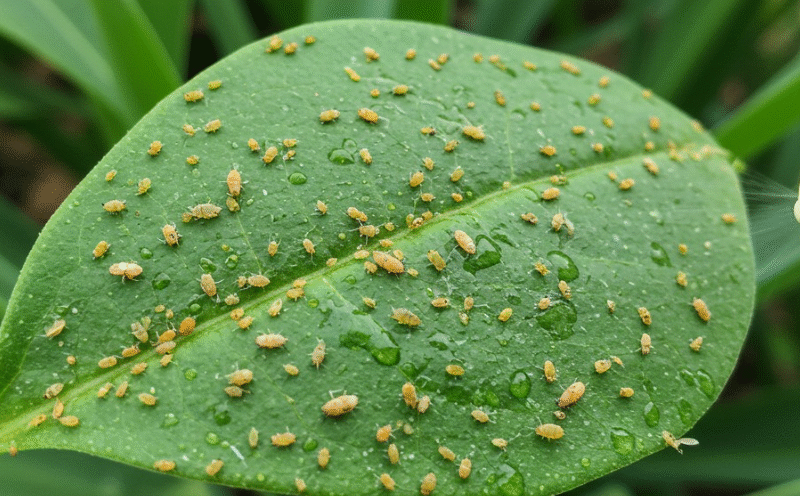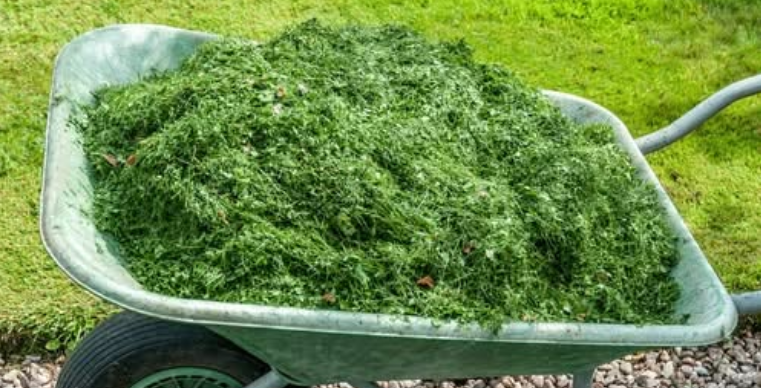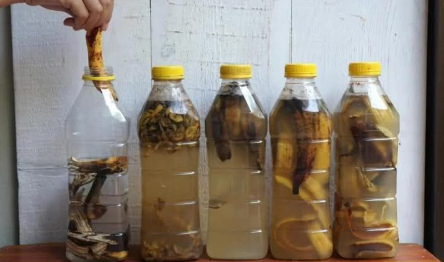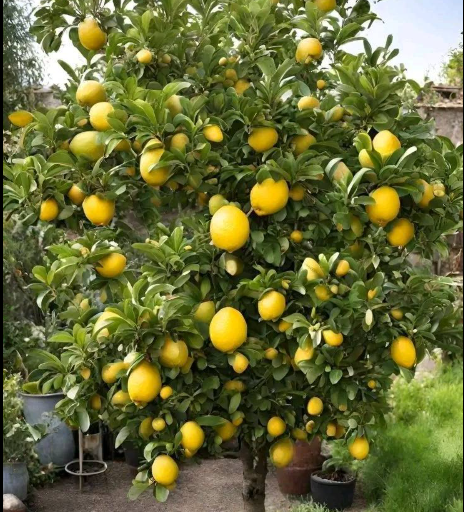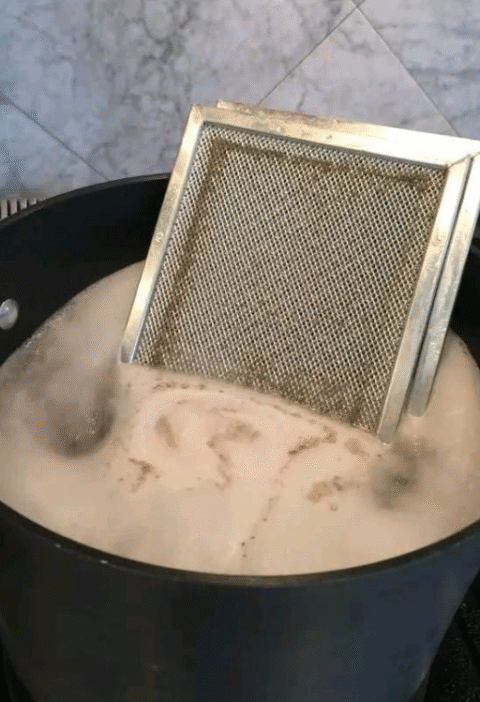All the Insects Disappear from the Garden: A Single Organic Ingredient Solution
Gardening can be deeply rewarding—but pests like aphids, spider mites, caterpillars, and whiteflies often threaten that serenity. If you’re looking to ward off insects using entirely safe, organic ingredients, this garlic‑cinnamon‑pepper‑soap spray is one of the best-kept garden secrets. Let’s dive into the benefits, how it works, expert insights, practical tips, and real‑world advice to get your plants thriving organically.
🌿 Why This Organic Spray Works So Well
This homemade concoction combines four safe, widely accessible ingredients that together create a potent, plant-safe defense.
Garlic: Nature’s Insect Repellant & Fungicide
- Rich in sulfur compounds such as allicin, garlic emits a strong odor that insects like aphids, beetles, and caterpillars avoid.
- Also possesses natural antifungal action, helping reduce mold and mildew on leaves.
Cinnamon: Antimicrobial & Ant‑Pest Shield
- Acts as a natural fungicide, inhibiting fungal spores and growth.
- The scent and taste deter ants, gnats, and other crawling pests.
Pepper: Capsaicin-Based Pest Defender
- Capsaicin, found in cayenne or hot pepper flakes, disrupts insects’ sensory receptors, keeping them away from treated foliage.
- Effective versus mites, aphids, caterpillars, and more.
Organic Soap: Adhesion & Soft-Bodied Insect Control
- Breaks surface tension, allowing the active ingredients to cling to leaves and stems.
- Suffocates soft-bodied pests like spider mites and aphids by penetrating their waxy coatings.
🔧 How to Prepare & Use the Spray
Ingredients You’ll Need
- 1 head of garlic (about 8–10 cloves)
- 1 tablespoon (≈ 15 g) ground cinnamon
- 1 tablespoon (≈ 5–7 g) cayenne pepper or hot pepper flakes
- 1 tablespoon (≈ 15 ml) organic liquid soap (unscented or mild)
- 1 quart (≈ 1 liter) clean water
Step‑by‑Step Instructions
- Blend Ingredients: Peel and crush the garlic cloves. In a blender, mix garlic, cinnamon, pepper, and water until finely blended.
- Steep: Transfer to a jar or bottle and let the mixture steep for at least 24 hours at room temperature to extract maximum potency.
- Strain: Use a fine mesh sieve, cheesecloth, or coffee filter to remove solids—this helps prevent nozzle clogging.
- Add Soap: After straining, stir in the organic liquid soap thoroughly.
- Adjust Strength: If too potent for delicate plants, dilute further with water at a 1:1 or 1:2 ratio.
- Bottle Up: Transfer to a clean spray bottle, clearly labeled with contents and date.
How & When to Apply
- Spray Early/Late: Apply in the early morning or late evening when temperatures are cooler to avoid leaf scorch and give insects maximum exposure time.
- Cover Thoroughly: Focus on undersides of leaves, leaf joints, and new growth—where pests typically congregate.
- Frequency: Spray every 5–7 days, and always reapply after heavy rain washes it away.
- Test First: Always test on one or two leaves or one plant first. Wait 24 hours to ensure there’s no negative reaction before wider application.
✅ Expert Insights & Safety Notes
Dr. Leila Nour, expert in organic horticulture and integrated pest management:
“This spray leverages known sulfur and capsaicin pathways to deter pests naturally. Garlic and cinnamon protect both insects and fungal pathogens, while soap improves adhesion. It’s a gentle, balanced approach suited to organic gardens.”
Prof. Mark Benson, entomologist and author of Safe Garden Pest Control:
“Used correctly, this mixture offers broad-spectrum defense—especially valuable when introduced early. Always dilute appropriately and rotate treatments to avoid adaptation in insect populations.”
📊 Quick Health & Nutrition Table
| Ingredient | Active Compound | Pest‑control Benefit | Application Measurement | Weight/Volume |
|---|---|---|---|---|
| Garlic | Allicin (sulfur compounds) | Repels aphids, beetles, caterpillars; antifungal | 1 head (≈ 8–10 cloves) | ≈ 50 g peeled |
| Cinnamon | Cinnamaldehyde | Fungicidal action; deters ants/gnats | 1 Tbsp ground | ≈ 7–10 g |
| Pepper (cayenne/flakes) | Capsaicin | Repels aphids, mites, caterpillars | 1 Tbsp flakes or powder | ≈ 5–7 g |
| Organic liquid soap | Surfactant | Adheres spray; suffocates soft pests | 1 Tbsp (≈ 15 ml) | ≈ 15 ml |
| Water (carrier) | N/A | Dissolves actives, enables spraying | 1 quart / 1 liter | ≈ 1,000 ml |
💡 Tips for Best Results & Safety Practices
- 👩🌾 Store Properly: Keep in a cool, dark place and use within one week for best potency.
- 🔄 Rotate Treatments: Alternate with other organic treatments (e.g., neem oil, horticultural oil) every few weeks to reduce resistance.
- 🐞 Conserve Beneficial Insects: Avoid spraying flowering blooms to protect pollinators like bees and ladybugs.
- 🌱 Combine Practices: Pair spray use with crop rotation, pest-repellent companion plants (e.g., marigold, basil), and habitat for beneficial insects (like lacewings, parasitic wasps).
- 🧪 Observe Plant Response: Tender foliage may show slight burn—dilute more or reduce frequency if observed.
❓ Frequently Asked Questions (FAQs)
- Is this spray safe for edible plants?
Yes—used in proper dilution, it’s safe on vegetables, fruits, herbs, and ornamentals. - How long can I store the mixture?
Use within 5–7 days. After that, garlic can ferment and potency decreases. - What if my plant shows leaf burn?
Rinse the plant with water, dilute the spray further next time, and test on a small area before full application. - Can I mix the spray with other solutions?
Avoid mixing with chemical pesticides. You can alternate with neem and horticultural oils, but don’t combine in the same spray bottle. - Does it affect earthworms or soil microbes?
No—when used only as a foliage spray, it poses minimal risk to soil ecology. - What about stink bugs or scale insects?
For scale, physical removal or horticultural oil may be necessary; stink bugs may require separate trapping methods. - How often should I reapply after rain?
Reapply within 24 hours of rain or heavy watering that washes the spray off. - Can I use fresh chili instead of ground pepper?
Yes—blend fresh chilies, but be sure to strain thoroughly to avoid solid particles. - Does it protect against fungal diseases?
Cinnamon and garlic offer moderate antifungal action, but serious outbreaks (e.g., powdery mildew, blight) may need additional treatments like copper‑based organic fungicides. - Will insects develop resistance?
Resistance is unlikely if you rotate with other organic methods, vary active ingredients, and monitor regularly.
🍽️ Related Recipes & Companion Practices
Looking for companion planting ideas or vegetable recipes that support pest‑resistant gardens? Check out this garden guide site (or your favorite organic gardening blog) for ideas on how to integrate herbs like basil, mint, and marigolds that naturally repel pests—and tasty garden‑to‑table recipes that support plant‑based health and biodiversity.
🌱 Final Thoughts
With a simple blend of garlic, cinnamon, cayenne pepper, and organic soap, you can build a powerful, chemical‑free line of defense against a wide array of plant pests. Supported by expert endorsements, this spray is both safe and effective when used carefully. Combine it with good gardening habits—companion planting, crop rotation, beneficial insect attraction—for lush, healthy growth. Say goodbye to harmful chemicals and hello to an organic, thriving garden!
Enjoy cultivatinę your garden—naturally. Happy gardening! 🌼
